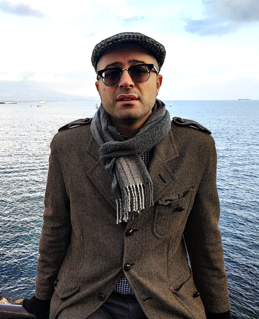
The Brandenburg Concertos by Johann Sebastian Bach are a collection of six instrumental works presented by Bach to Christian Ludwig, Margrave of Brandenburg-Schwedt, in 1721. They are widely regarded as some of the best orchestral compositions of the Baroque era.

Trevor David Pinnock is a British harpsichordist and conductor.
A harpsichord concerto is a piece of music for an orchestra with the harpsichord in a solo role. Sometimes these works are played on the modern piano. For a period in the late 18th century, Joseph Haydn and Thomas Arne wrote concertos that could be played interchangeably on harpsichord, fortepiano, and pipe organ.

L'estro armonico, Op. 3, is a set of 12 concertos for stringed instruments by Italian composer Antonio Vivaldi, first published in Amsterdam in 1711. Vivaldi's Twelve Trio Sonatas, Op. 1, and Twelve Violin Sonatas, Op. 2, only contained sonatas, thus L'estro armonico was his first collection of concertos appearing in print. It was also the first time he chose a foreign publisher, Estienne Roger, instead of an Italian. Each concerto was printed in eight parts: four violins, two violas, cello and continuo. The continuo part was printed as a figured bass for violone and harpsichord.

The English Suites, BWV 806–811, are a set of six suites written by the German composer Johann Sebastian Bach for harpsichord and generally thought to be the earliest of his 19 suites for keyboard, the others being the six French Suites, the six Partitas and the Overture in the French style. They probably date from around 1713 or 1714.

Johann Sebastian Bach was a German composer and musician of the late Baroque period. He is known for instrumental compositions such as the Cello Suites and Brandenburg Concertos; keyboard works such as the Goldberg Variations, The Well-Tempered Clavier and the Toccata and Fugue in D minor; and vocal music such as the St Matthew Passion and the Mass in B minor. Since the 19th-century Bach Revival, he has been generally regarded as one of the greatest composers in the history of Western music.
Johann Peter Kellner was a German organist and composer. He was the father of Johann Christoph Kellner.

Isolde Ahlgrimm was an Austrian harpsichordist and fortepianist.
Cornelius Heinrich Dretzel was a German organist and composer. He was born in Nuremberg, where he appears to have spent his whole life in various organists' posts, including:

Anyone for Mozart, Bach, Handel, Vivaldi? is a CD compilation re-issue of music by the Swingle Singers. It combines tracks from two previous LP releases, Going Baroque and Swinging Mozart.

Alastair McAllister is an Australian harpsichord builder known for his historical integrity, design and workmanship, and for producing modern copies of instruments that closely match their prototypes in sound and touch. At the age of 15, he became inspired by the Baroque after hearing the music of Domenico Scarlatti. Working closely with his colleague, Mars McMillan, he founded Harpsichord Makers of Melbourne in 1967, in the inner-Melbourne suburb of Clifton Hill, and by the early 1970s he had become a full-time harpsichord builder. McAllister and his colleagues have created instruments patterned after the work of Henri Hemsch, Burkhardt Schudi, Johannes Daniel Dulcken, the Ruckers family, Christian Zell and Johann Heinrich Harrass, among others, and he has trained or influenced Australian builders such as Marc Nobel, Andrew Bernard, Alan Todd, Jean-Louis Cocquillat, and Richard Schaumloeffel.

Mahan Esfahani is an Iranian-American harpsichordist.

Anthony Newman is an American classical musician. While mostly known as an organist, Newman is also a harpsichordist, pedal harpsichordist, pianist, fortepianist, composer, conductor, writer, and teacher. A specialist in music of the Baroque period, particularly the works of Johann Sebastian Bach, Newman considers himself to have played an important role in the movement towards historically informed performance. He has collaborated with noted musicians such as Kathleen Battle, Julius Baker, Itzhak Perlman, Eugenia Zukerman, Jean-Pierre Rampal, Leonard Bernstein, Michala Petri and Wynton Marsalis for whom he arranged and conducted In Gabriel’s Garden, the most popular classical record of 1996.
Pascal Dubreuil is a French harpsichordist, a teacher and a specialist of musical rhetoric.

The six sonatas for violin and obbligato harpsichord BWV 1014–1019 by Johann Sebastian Bach are works in trio sonata form, with the two upper parts in the harpsichord and violin over a bass line supplied by the harpsichord and an optional viola da gamba. Unlike baroque sonatas for solo instrument and continuo, where the realisation of the figured bass was left to the discretion of the performer, the keyboard part in the sonatas was almost entirely specified by Bach. They were probably mostly composed during Bach's final years in Cöthen between 1720 and 1723, before he moved to Leipzig. The extant sources for the collection span the whole of Bach's period in Leipzig, during which time he continued to make changes to the score.
The Triple Concerto, BWV 1044, is a concerto in A minor for traverso, violin, harpsichord, and string orchestra by Johann Sebastian Bach. He based the composition on his Prelude and Fugue BWV 894 for harpsichord and on the middle movement of his Organ Sonata BWV 527, or on earlier lost models for these compositions.
Pieter-Jan Belder is a Dutch instrumentalist in historically informed performance, playing recorder, harpsichord and fortepiano. He founded the ensemble Musica Amphion for recordings and performances.
Alexander Sung is a Chinese harpsichordist and pianist. His family moved to Hong Kong before the 1949 Chinese Revolution where he attended Pui Ching Middle School. After studies at the Mozarteum in Salzburg, Austria, under Heinz Scholz, the brother of Robert Scholz, Alexander Sung studied harpsichord under Isolde Ahlgrimm and piano under Richard Hauser in Vienna.










